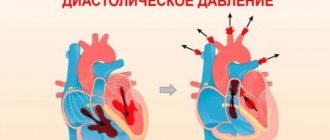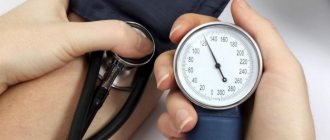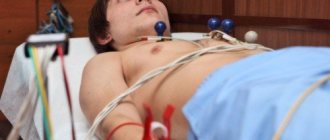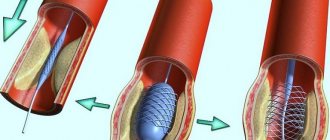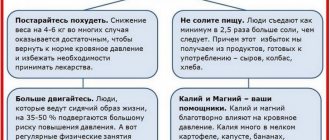The SARS-CoV-2 coronavirus epidemic has made its own adjustments to the work activities of Russians, in particular, it has raised the issue of obtaining sick leave - certificates of temporary incapacity for work due to illness or asymptomatic disease.
How long does sick leave last for coronavirus? What should you do if your close relative or neighbor gets sick, and you are a contact person? Is it possible to obtain a certificate of temporary disability remotely? In this article we will talk about the procedure for obtaining sick leave during coronavirus.
Who and when can take sick leave during coronavirus?
Only officially employed citizens can apply for payments for temporary disability from the Social Insurance Fund of the Russian Federation, from whose wages tax was withheld on a monthly basis.
Individual entrepreneurs (IP) and the self-employed, as well as people working without official employment, are not entitled to payments.
- A patient with confirmed coronavirus or viral pneumonia caused by CODID-19 may qualify for paid sick leave.
- Sick leave can be taken by contact persons, relatives, people who care for the patient and have systematic contact with him.
- In particular, a parent whose child is sick can take sick leave.
- Patients with chronic diseases who are at risk for developing complications
can take sick leave for the duration of the pandemic The list of such diseases has been approved by the Health Committee of the Russian Federation and allows an employee to take sick leave ( important! but only for the entire quarantine period - the period established by the region), having first registered with the clinic at the place of residence. - Citizens of the Russian Federation who have returned from epidemiologically disadvantaged countries and are forced to spend two weeks in self-isolation due to quarantine can take sick leave at work.
- citizens over 65 years of age are taking sick leave due to a special order from local authorities and the Chief Sanitary Doctor of the Russian Federation, since older people are at highest risk from coronavirus.
It is important to understand that monetary compensation for illness or in case of contact with a sick person will be less than wages. Therefore, if the coronavirus is mild, the employee can agree with the employer on remote employment.
Only the attending physician - a public or private clinic (if he has the appropriate license and the ability to conduct a medical examination) can send a patient on sick leave. The doctor will clarify the complaints and assess the patient’s health condition. Emergency doctors are not authorized to issue sick leave.
With coronavirus, symptoms such as elevated body temperature, general weakness and fatigue, loss of smell and other disturbances in the functioning of internal organs are observed.
If coronavirus provokes pneumonia, the patient, as a rule, begins to be bothered by symptoms of a respiratory disease: shortness of breath, cough, chest discomfort.
But visual examination, auscultation and pulse oximetry are not enough to make a diagnosis and issue a sick leave certificate. Coronavirus is considered confirmed based on the results of a laboratory PCR test. If the doctor suspects that the patient may have pneumonia caused by COVID-19, the patient is recommended to have a CT scan of the lungs. Pneumonia is a common complication of the new coronavirus infection. The patient will need more time to recover, and more intensive therapy will be prescribed.
To receive sick leave, patients with chronic diseases must register with the clinic. Elderly people over 65 years of age and people returning from abroad are forced to comply with the self-isolation regime, so they can apply for sick leave remotely through the State Services portal. This procedure was established by a special order of the Government of the Russian Federation, but it is not final and can be changed.
If you have been in contact with an infected person, you can take sick leave for quarantine or check with the head of the company about the possibility of working remotely for two weeks.
A sick leave certificate can be issued electronically or in writing. This data is entered into the Social Insurance Fund database, which is available to the employer after authorization in his personal account.
Each temporary disability certificate contains a code for payment of benefits, which will be different for patients with confirmed coronavirus (code 01) and a contact person forced to go into quarantine without obvious signs of illness (code 03).
Disability group
The degree of disability due to hypertension is assessed by a group of experts.
The commission of doctors may reject the request if it considers that the treatment has not yet been completed.
A number of circumstances are taken into account:
- degree of disease progression;
- presence/absence of target organ damage;
- reversibility of complications;
- frequency of hypertensive crises and severity of their course;
- accompanying illnesses;
- effectiveness of therapy;
- labor orientation;
- contraindications by type and working conditions.
Disability groups are assigned according to the following parameters:
| Disability group | Conditions of assignment |
| Group I |
|
| Group II |
|
| III group |
|
Contraindications by type and working conditions
If you are diagnosed with hypertension, it is not recommended to engage in professional activities associated with:
- frequent stress;
- lifting weights;
- production where the temperature is high, there is a lot of noise or vibration;
- production where it is necessary to come into contact with pesticides;
- night shifts.
For hypertensive patients with stage II of the disease, physical labor is contraindicated if vascular lesions of the heart predominate.
When diagnosing vascular lesions of the brain, doctors strongly advise not to engage in work that involves mental stress and constant stress. Author of the article Svetlana Anatolyevna Ivanova, general practitioner
How many days does sick leave last for coronavirus?
Sick leave for coronavirus lasts as long as necessary for the patient’s body to completely defeat the virus and restore it.
For a patient with coronavirus confirmed by laboratory diagnostics, but without pneumonia, the first sick leave is issued, as a rule, for 14 days. All this time, the patient is treated according to the doctor’s recommendations and monitors the dynamics of therapy. After two weeks, the patient does a PCR test, and the doctor decides on the length of the sick leave.
It is important that the virus does not provoke the development of complications - pneumonia, vascular thrombosis, kidney failure. If there are severe signs of a respiratory disease: cough, shortness of breath, chest discomfort, lack of air, a CT scan of the lungs should be done.
The patient should remain on sick leave until a negative test result - PCR or immunoglobulin - comes back. However, it is important to understand that antibodies (responses to the virus) can remain in the blood for another 2-3 months, even when the patient is already healthy. Taking into account the rather high percentage of error, sometimes it is preferable to do not one, but two tests. After the first negative result, the attending physician can discharge the recovered patient or extend the sick leave, but under quarantine.
If coronavirus provokes pneumonia, then the disease is more severe and the sick leave will last longer. Before discharging the patient, the doctor must make sure not only that there is no viral or viral-bacterial infection, but also that there are no unresolved inflammatory foci in the lungs (infiltrates, “ground glass”, “cobblestone” symptoms).
It can take a month or more to treat viral pneumonia. At the same time, residual effects of coronavirus, such as cough, sore throat, difficulty breathing, may persist for another 1-2 months after pneumonia has already been defeated.
Elderly people over 65 years of age and patients at risk with chronic diseases or “in conditions requiring self-isolation” work remotely or are on sick leave until special orders from the government and the Chief Sanitary Doctor of the Russian Federation, that is, as long as there is a threat for their life and health.
Hypertensive crisis
If hypertension is a long-term serious disease, then a hypertensive crisis is an emergency for the human body that requires urgent intervention from medical professionals. Blood pressure rises sharply to dangerous levels, which can cause brain damage, interruptions in the functioning of the heart and other vital organs. Therefore, experiencing a hypertensive crisis at work is extremely undesirable. It is urgent to call an ambulance and go to the hospital.
When all the necessary measures to restore pressure have been completed, the doctor will decide the issue regarding sick leave.
If this case is not isolated, and similar crises have happened to the patient before, hypertension is diagnosed.
At what pressure is a certificate of incapacity for work opened and under what circumstances?
Whether the employee will be given sick leave, and for how long, largely depends on the degree of hypertension and the concomitant condition of the body. When blood pressure increases, doctors distinguish three degrees or stages of the disease:
- In the first degree, the upper pressure level should reach 140 millimeters, and the lower one – 90.
- The second degree is characterized by the following indicators: upper 160 millimeters, lower – at least 100.
- In the third degree, the upper pressure is more than 180 millimeters, and the lower pressure is more than 110 millimeters.
If the pressure level is higher than normal values, but has not reached the level characteristic of the first degree of hypertension, sick leave will most likely not be issued.
Instead, the employee will be prescribed medications that he can take if his blood pressure rises again, and will be advised to refrain from serious physical activity and mental stress.
Regardless of the numbers on the tonometer, the employee will definitely go on sick leave and, most likely, he will even be admitted to the hospital with the following symptoms, accompanied by high blood pressure:
- If a person is unconscious.
- If vision suddenly disappears or deteriorates, visual disturbances and similar problems appear.
- “Strange” movements appeared, the gait changed, and convulsions occurred.
- Acute pain in the abdomen.
How is sick leave paid for coronavirus?
The procedure for payments for sick leave during coronavirus is no different from other situations, for example, from sick leave for ARVI or for caring for a sick child. The amount of payments is not affected by whether the patient suffers from viral pneumonia caused by COVID-19, or whether he is forced to quarantine due to contact with the patient, chronic diseases or old age.
The amount of payments is affected by:
- Seniority;
- The employee's actual earnings for the last two years;
- Established minimum wage level.
How to calculate how much money I am entitled to for sick leave due to coronavirus?
Step 1 - calculate the total income for the last two years. For example, 2021 - 360,000 rubles, 2021 - 420,000 rubles.
Step 2 - calculate the average earnings for 1 day, that is, divide the amount of earnings for 2 years by 731. In this case, it turns out:
(360,000 + 420,000) / 731 = 1,067 rubles.
Step 3 - we calculate the daily sick leave payment based on the current work experience:
a) Less than six months - the amount of daily payment corresponds to the minimum wage (currently - 404.33 rubles (if there are 30 days in a month) or 391.29 rubles (31 days).
b) Less than 5 years - 60% of the average daily earnings are due, in our example it is 640 rubles.
c) From 5 to 8 years - 80% of the average daily earnings, in our example it is 854.6 rubles.
d) More than 8 years - 100% of the average daily earnings, in this case it is 1067 rubles.
Each working day missed by the employee due to health reasons is paid. The maximum period of sick leave can be extended to 10 months by decision of the medical commission.
If the specifics of the job and the enterprise do not allow switching to a remote work format, the employer can arrange downtime for reasons beyond his control and, with the consent of the employee, provide him with annual paid leave or leave at his own expense.
The employer pays the employee himself for the first three days of sick leave. Next, the funds are accrued from the Social Insurance Fund, in favor of which tax was withheld from the employee’s wages. In accordance with the Federal Law “On the National Payment System” (161-FZ), funds from the Social Insurance Fund can only be credited to the MIR card.
Minimum term
No regulatory document sets a minimum period of sick leave in 2021, but usually at least three days are given for treatment. After repeated admission, a decision is made to continue or discontinue therapy. That is, the duration of sick leave is determined by the attending physician, taking into account the patient’s well-being.
At the same time, the laws of the Russian Federation stipulate how long medical workers can give sick leave:
- the attending physician has the right to issue a sick leave certificate for up to 15 days;
- paramedics and dentists are allowed to release the patient from work for up to 10 days inclusive;
- a special medical commission is authorized to extend the document for longer periods.
How to apply for sick leave during coronavirus?
Sick leave is issued in the usual manner. Depending on how they feel, the sick person consults a doctor (infectious disease specialist, therapist, pulmonologist) directly at a medical institution or calls an ambulance at home.
The certificate of incapacity for work is issued electronically (in some regions in writing). They have the same strength. Electronic sick leave for coronavirus will be stored in the all-Russian FSS database - accessible only to the employee, his employer and the attending physician in a medical institution connected to a single database.
During quarantine, you should adhere to self-isolation - a potential carrier of the new virus should not leave home, even to the clinic, as this may contribute to the spread of the infection.
If you live with a person who has been diagnosed with coronavirus, or have recently returned from an epidemiologically unfavorable country, you can apply for quarantine sick leave using the State Services website.
To do this you need:
1. Submit an application and fill out a form on the website.
2. Attach a photo of the passport page and documents confirming the fact of crossing the border or living together with the patient. A sample and a complete list of such documents is available on the State Services website.
3. Provide your electronic sick leave number to your employer.
Temporary disability benefits due to quarantine are paid in two parts: for the first 7 days missed and for the remaining period.
Coronavirus code on sick leave
The main thing you should pay attention to is that code 01 is assigned to sick leave for patients with confirmed coronavirus. Code 03 corresponds to a hospital patient who was forced to go into quarantine without the ability to continue working remotely. If, after 14 days of quarantine, the disease makes itself known, the patient will receive a certificate of temporary incapacity for work 01 from the doctor.
Patients with viral pneumonia should be prepared for the fact that it will take at best 1 month to fight the disease. The condition of the respiratory organ can be assessed on a control CT scan. It is important to exclude pneumonia, incomplete inflammatory processes in the lungs and complications of pneumonia, such as fibrosis. If there are signs of fibrotic changes on CT and characteristic symptoms, the patient should contact a pulmonologist and have a control CT scan done in a year.
Do I need to notify the employer?
Labor legislation does not stipulate the obligation of workers to warn management about illness. No such norm is specified in 255-FZ of December 29, 2006 on temporary disability. The employer does not have the right to force employees to provide mandatory notification of their absences from work due to illness. Reporting illness is exclusively the employee’s right, but in no case is it an obligation. But the employer has the right to prescribe such a condition in the internal labor regulations of the organization.
The employee conveys a warning about temporary disability both orally (directly to the manager or through colleagues) and in writing, by drawing up a notice addressed to the manager. The application is drawn up in free form, indicating the diagnosis and estimated duration of the illness.

